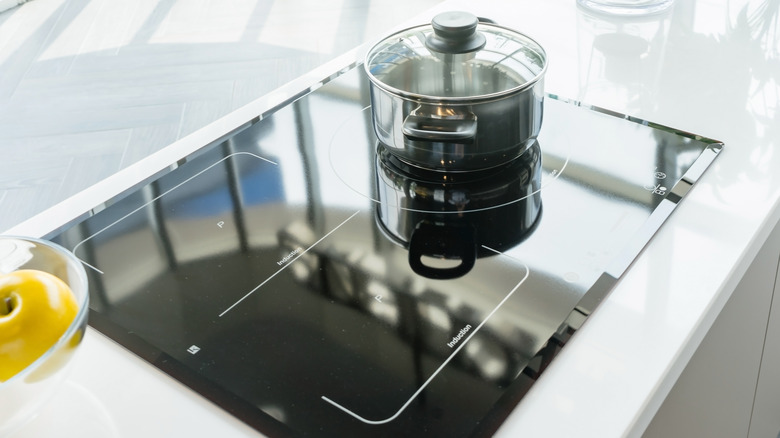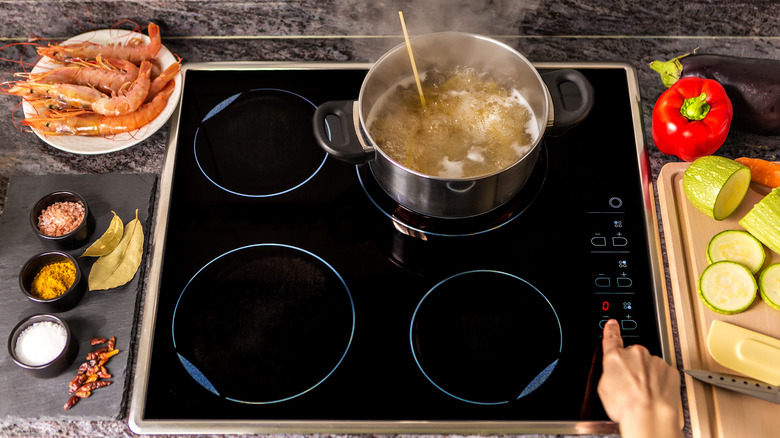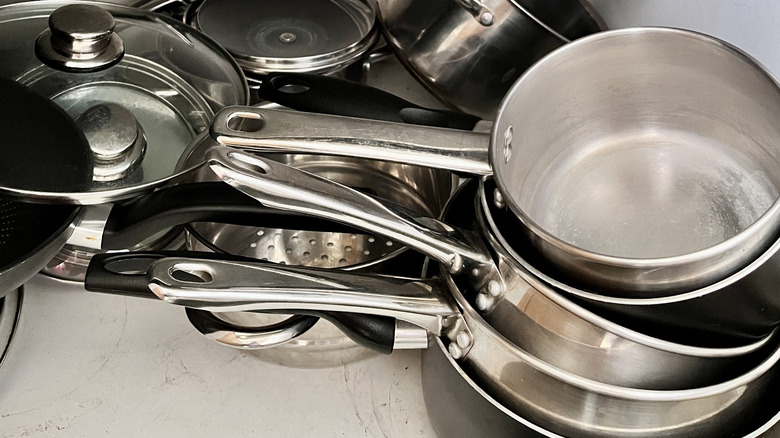Can An Induction Range Oven Bring The Heat To Your Kitchen? Here Are The Pros & Cons
If you've been in the market for a new range or stovetop recently, then you may have noticed that in addition to the traditional gas and electric coil choices, electric induction ranges are also now a commonly accessible option in the United States. Induction ranges not only have the benefit of being safer and more energy efficient than both gas and electric coil ranges, but they also heat quickly and precisely and are easy to clean. Despite those advantages, they also come with some downsides — the biggest of which is cost. Another crucial, though often overlooked, disadvantage to induction cooktops is their potential health risk for anyone with magnet-sensitive medical devices.
Induction cooktops almost seem like magic thanks to their ability to rapidly heat the contents of pots and pans without allowing the stovetop around the pan to become hot. Of course, it isn't magic — it's magnets. Unlike gas cooktops, which have a small gas-powered flame just under the burner, and traditional electric coil cooktops, which use electric currents to heat a coil, induction ranges use an electromagnetic field that transfers heat to your pots and pans, as long as the cookware contains ferrous iron.
Advantages of induction ranges
One of the biggest upsides to induction ranges is safety. Because the magnetic field in the cooktop only heats pots and pans that contain ferrous metal, cloth, food spills, and little hands are all somewhat protected from burns. Even if a burner is accidentally left on, it won't heat up as long as something ferrous is not touching it, significantly lowering the chance of fires and injuries.
Another big advantage to induction ranges is their heating speed and precision. Not only can they boil water more quickly than gas or traditional electric stovetops, but because of their precise temperature controls, they can also easily keep that water at a simmer instead of allowing it to boil over. Additionally, because turning off a burner instantly stops the heat transfer, food is less likely to overcook, unlike traditional cooktops, which take time to cool down.
Induction cooktops also appear to be healthier for both the climate and users than gas stoves, which have a hidden severe downside: Gas stoves can release significant amounts of methane, which is not only damaging to the environment but can also negatively impact the air quality in users' kitchens. This can even potentially exacerbate respiratory problems like asthma.
Disadvantages of induction ranges
Despite their many advantages, induction cooktops only took third in a survey of the most popular stovetop styles. While some of this may be due to their relative newness, these ranges also have real disadvantages to consider. The biggest downside to induction ranges is their cost. Not only are the stovetops themselves generally several hundred dollars more expensive than gas or electric coil cooktops, but you may need to purchase new pots and pans as well. Because the electromagnetic field used by induction ranges only works with cookware that contains ferrous iron, neither copper nor aluminum pans will work with their heating element, meaning a new stovetop could also require new cookware.
Another important downside to induction cooktops is their potential for interference with some medical devices, including pacemakers. Because induction cooktops create a magnetic field, it's recommended that anyone with a pacemaker should stay at least 1 to 2 feet away, regardless of whether or not the stovetop is on. Additionally, induction cooktops may also potentially interfere with cochlear implants.


